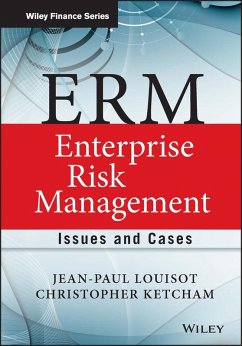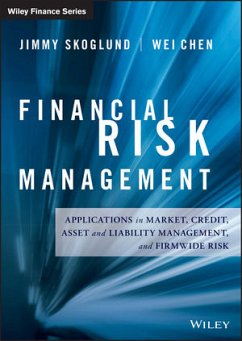
Fuel Hedging and Risk Management (eBook, ePUB)
Strategies for Airlines, Shippers and Other Consumers
Versandkostenfrei!
Sofort per Download lieferbar
61,99 €
inkl. MwSt.
Weitere Ausgaben:

PAYBACK Punkte
0 °P sammeln!
A hands-on guide to navigating the new fuel markets Fuel Hedging and Risk Management: Strategies for Airlines, Shippers and Other Consumers provides a clear and practical understanding of commodity price dynamics, key fuel hedging techniques, and risk management strategies for the corporate fuel consumer. It covers the commodity markets and derivative instruments in a manner accessible to corporate treasurers, financial officers, risk managers, commodity traders, structurers, as well as quantitative professionals dealing in the energy markets. The book includes a wide variety of key topics rel...
A hands-on guide to navigating the new fuel markets Fuel Hedging and Risk Management: Strategies for Airlines, Shippers and Other Consumers provides a clear and practical understanding of commodity price dynamics, key fuel hedging techniques, and risk management strategies for the corporate fuel consumer. It covers the commodity markets and derivative instruments in a manner accessible to corporate treasurers, financial officers, risk managers, commodity traders, structurers, as well as quantitative professionals dealing in the energy markets. The book includes a wide variety of key topics related to commodities and derivatives markets, financial risk analysis of commodity consumers, hedge program design and implementation, vanilla derivatives and exotic hedging products. The book is unique in providing intuitive guidance on understanding the dynamics of forward curves and volatility term structure for commodities, fuel derivatives valuation and counterparty risk concepts such as CVA, DVA and FVA. Fully up-to-date and relevant, this book includes comprehensive case studies that illustrate the hedging process from conception to execution and monitoring of hedges in diverse situations. This practical guide will help the reader: * Gain expert insight into all aspects of fuel hedging, price and volatility drivers and dynamics. * Develop a framework for financial risk analysis and hedge programs. * Navigate volatile energy markets by employing effective risk management techniques. * Manage unwanted risks associated with commodity derivatives by understanding liquidity and credit risk calculations, exposure optimization techniques, credit charges such as CVA, DVA, FVA, etc.
Dieser Download kann aus rechtlichen Gründen nur mit Rechnungsadresse in D ausgeliefert werden.













